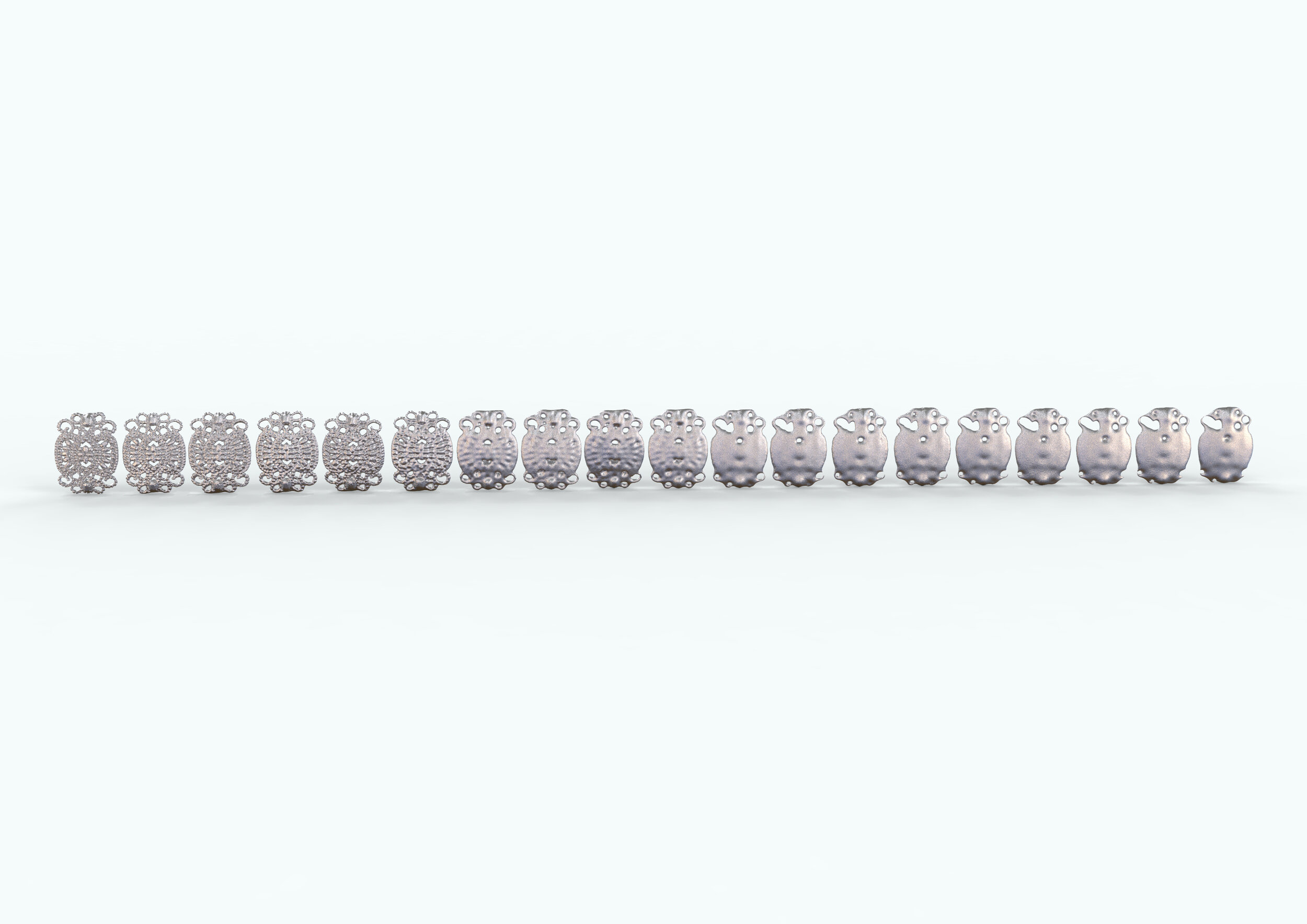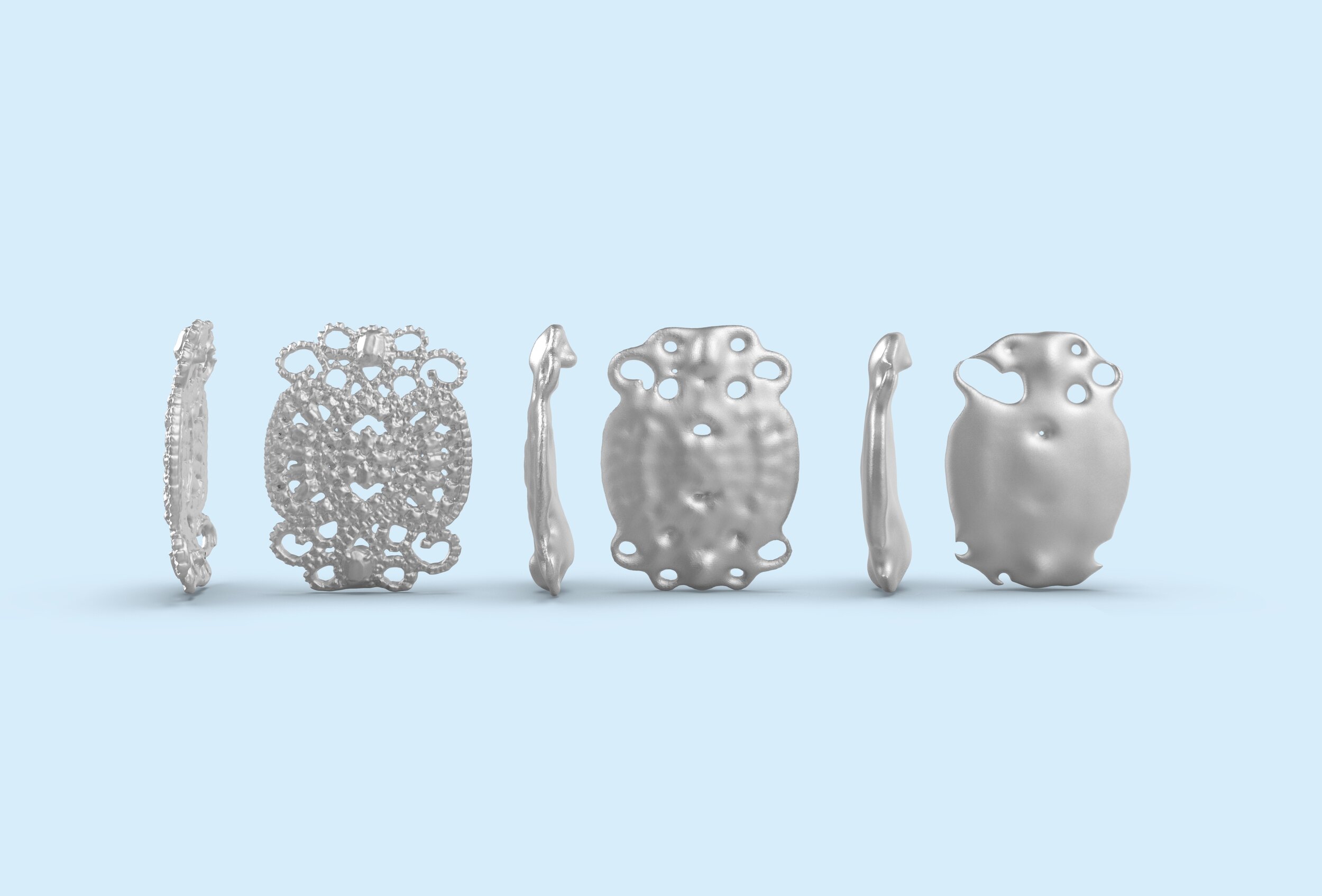GLITCH IN THE COPY
Glitch in the copy was a one year research project that took place in 2016-2017 at Konstfack university, Stockholm, Sweden. The project investigates the generational loss that occur when a piece of jewelry is translated between a physical and a digital state, investigating what kind of information that is added and/or subtracted during to the copying process.
My starting point for my research project was to investigate the effects of copy and reproduction in relation to objects. This project has been an exploration into copy, repetition, through the process of creating, copying, and reproducing a specific jewelry. When an object is copied, it acquires “noise” or generational distortion. This project takes its inspiration from a fascination with this distortion.
Research question:
What information is added or subtracted when a pieces of jewelry is digitally copied / reproduced?
Today we live in a copy paste culture and the way we look upon concepts like the original and the copy that have been altered along with our societies cultural change. I am questioning how this change of perspective has affected the way we look upon contemporary craft and jewelry in relation to value, authenticity, technique, and production.
This research has its foundation in an artistic practical research where a studio practice is in focus. The main contexts/areas of thinking that I have examined is appropriation / remix culture and glitch art theory.
Methods of reproduction that has been my focus are 3d-scanning and 3d-printing and I have chosen these two methods since that 3d-scaning and 3d-printing are techniques that are commonly used by craft practitioners. If we as practitioners are using theses techniques we must know what stand for, what information they add or subtract. What do these tools add visually, aesthetically and conceptually?
The role of the practical research is sequence of actions that set in motion a curiosity to go beyond what is already known, in a nonverbal language that can be used to find new knowledge. It can create new ways of thinking though engagement with material, techniques and ideas.
As a jewelry artist I am fascinated with value and authenticity, how these concepts are instilled in intimate objects. The nature of jewelry is in detail, technique, and direct relation to material. Jewelry as a concept encompasses many ideas that are inherent in the history of copying, relating to the unique handmade as well as the mass manufactured.
With any form or media, the process of copying is only possible to a limited degree of accuracy, often depending on the quality of technique and equipment used. A mold can only be cast into a certain amount of times before it begins to degrade and affect the quality and integrity of the copy. This degradation, or generational loss, could be understood as noise within the copy process. Random changes occur and accumulate, incorporating themselves into each successive generation of object created. The project “Glitch in the copy” aims to explore what happens when a piece of jewelry is translated between a physical and a digital state.




